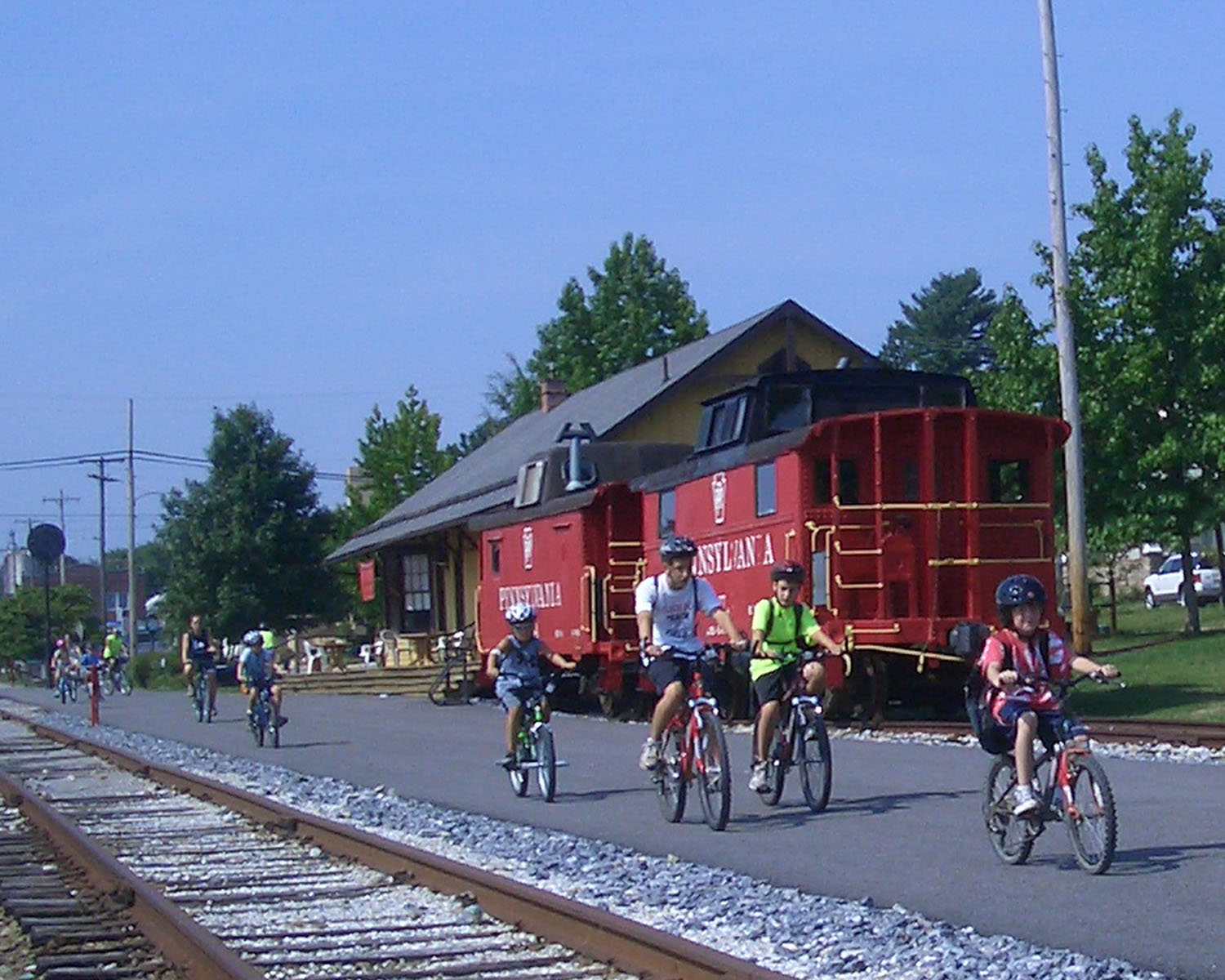The mysterious past of rail trails
Discussion of railbanking, the process by which unused rail lines are converted to popular rail trails.

For more and more Pennsylvanians, spring and summer bring forth an urge to explore the many parts of the Commonwealth that offer miles of traffic-free, hill-free cycling. I confess to being struck by this urge, even as I sit in my office preparing this blog. And so, as a mild-weather weekend approaches, I begin to seek out the many rail trails within easy driving distance from my York home.
Fortunately, there are many to choose – the nearby Heritage Rail Trail, Northwest River Trail, Lebanon Valley Rail Trail, and Cumberland Valley Rail Trail. And a little further afield – Pine Creek Rail Trail, Ghost Town Trail, and so on. Each offers a chance to unwind as I travel through cool forests, past expansive farmlands, and beside amazing waterways. I also enjoy the adventure of visiting towns along the bikeway. Ice cream usually enters into my visit, and occasionally I stumble across an outdoor concert. Once on the Youghiogheny River Trail, I cycled right into a lumbermen’s festival!
My rail trail visits also give me time to reflect on Pennsylvania’s rail history and the process that has allowed these corridors to be converted to modern-day rail trails. My father worked thirty-seven years as a car inspector for the Pennsylvania Railroad, and I am in my twenty-eighth year as executive director of the York County Rail Trail Authority. So, the conversion of rails to trails is part of my family history.
The process by which unused rails become trails – known as railbanking – is shrouded in legal jargon and federal regulations. Knowing the basics of railbanking helps to eliminate some of the mysteries behind how a rail corridor may come to be a popular rail trail. First, Rails-to-Trails Conservancy defines railbanking as a condition allowing a railroad to “bank” a corridor for future rail use is necessary. During the interim, alternative trail use is a viable option. Second, the federal Surface Transportation Board (STB) establishes the process and makes all decisions regarding railbanking. And third, the process begins when a railroad is willing to abandon the line, to file a notice to the STB, and to begin sales negotiations with a viable trail organization to purchase the line.
Most important, the STB has a very strict timetable by which each step in the railbanking process must be followed. The railroad and the trail organization must be in agreement prior to notifying the STB of their intent to convert the line to a trail. Once the railroad sends notification to the STB of its intent to railbank the line, each deadline must be met. Fortunately, there are many resources available to help with the railbanking process. Rails-to-Trails Conservancy’s website www.railstotrails.org offers this article, Rails-to-Trails Conversions: A Legal Review - Rails to Trails Conservancy | Rails to Trails Conservancy. And their legal department has real people who respond to emails and phone calls. STB hosts a website https://prod.stb.gov/proceedin... listing current railbanking filings and actions.
While the railbanking process is long, cumbersome, and even mysterious, the result is rewarding. Nothing is more refreshing to body, mind, and spirit than a long walk or ride along a rail trail on a pleasant spring or summer day. Thoughtfully placed interpretive signage along the trail may remind you of its railroad past, while you consider options for a soon-to-be enjoyed ice cream cone!
